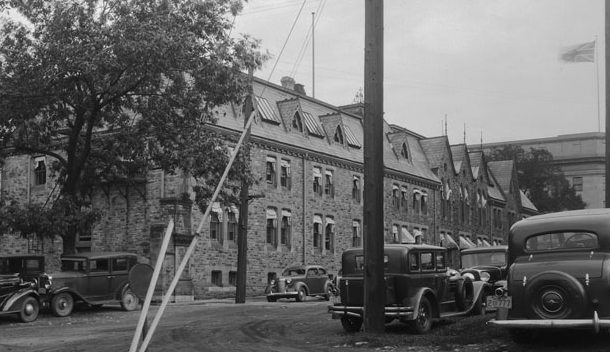It was a magnificent colonial landmark, Canada’s first Supreme Court building. Here a Laval tax lawyer, Louis St. Laurent, pleaded his first federal case in 1911. He made such a reputation in law he was later propelled to cabinet as justice minister and then the premiership in 1948.
St. Laurent was twice offered appointment to the Supreme Court but declined. “Low salary,” his secretary explained. In private practice St. Laurent earned $50,000 a year in the 1930s.
Even in politics he retained the habits of a corporate attorney. St. Laurent demanded punctuality, kept his cigarettes in a silver case and never campaigned without a black Homburg hat or a lectern, insisting that all speeches be triple-spaced so he could read a sentence at a glance.
He had little interest in “light conversation and exchanges of humour,” a friend said. The Ottawa Journal described St. Laurent as a tax lawyer who merely “played the part of prime minister.”
When he graduated at the top of his law class in Laval in 1905 the Supreme Court seemed the pinnacle of ambition. The court’s home from 1882 stood at the corner of Bank and Wellington Streets in Ottawa, at the foot of Parliament Hill.
Designed in a subdued Gothic Revival style, it mirrored the larger Parliamentary precinct buildings. The architect was Thomas Fuller, renowned in the Confederation era. Fuller designed Parliament itself and the Prime Minister’s Office, the Halifax Armoury and Toronto’s St. Stephen-in-the-Fields Anglican Church.
The courthouse was a witness to history. It heard pleas in the great conflicts of the era – rebellion and conscription, prohibition and the “persons” case that qualified women for federal appointments.
From his appointment to cabinet in 1941, St. Laurent passed the courthouse often. He walked to work from his apartment on Elgin Street and walked back home for lunch, “free from guards, sycophants or self-importance,” noted historian Desmond Morton.
The postwar era was not kind to architecture in the capital. Whole blocks of vintage homes and landmark buildings on Wellington Street were razed to make way for new structures including a modern Supreme Court, completed in 1945. The original court was left neglected and fell into disuse.
How much did St. Laurent care about the old courthouse where he’d made his name as a young barrister? As prime minister in 1956 he deemed the courthouse a fire trap and had it demolished to make way for a parking lot. It remains the only Parliament Hill structure to be razed by cabinet order.
Afterwards in 1976 a statue of St. Laurent was placed on the lawn of the new Supreme Court of Canada on Wellington Street. The site of the old courthouse today is the main RCMP vehicle checkpoint on Parliament Hill.
By Andrew Elliott 








